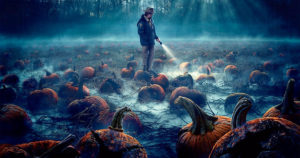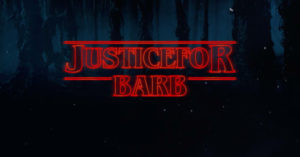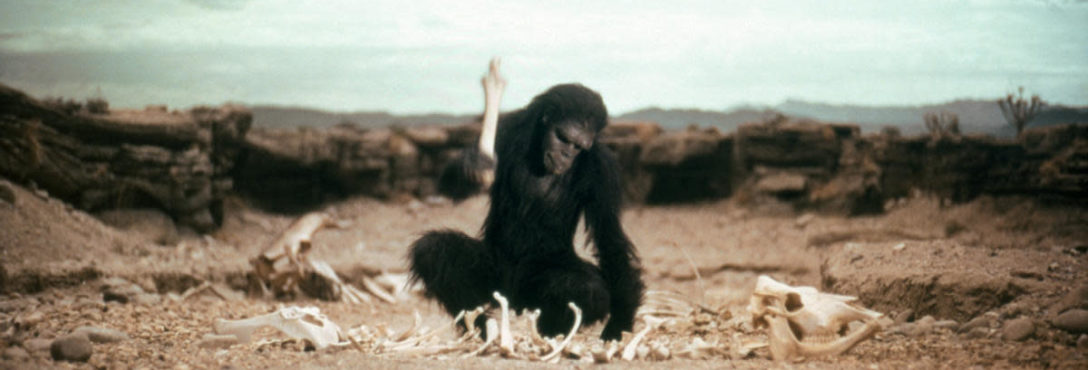Strange things are happening in Hawkins, Indiana. Of these strange things, perhaps the strangest is the Lovecraftian metamorphoses occurring under the soil. Farmers’ crops are dying, trees are oozing black liquid and the earth is eroding. All very strange things indeed.

Literary author Amitav Ghosh, in relation to climate change awareness, postulates that people looking back on the early 21st century will think of it oddly; ‘Quite possible, then, this era, which so congratulates itself on its self-awareness, will come to be known as the time of The Great Derangement.’ Indeed, it is a very odd time to be alive. We live in an era marked by a 6th mass species extinction looming furtively on the horizon, we comment on ever warmer summers and stranger winters but our behaviours are not necessarily changing. An unseasonably warm day, while pleasant, is shot through with the knowledge of the planet’s rising temperatures. It is something which envelopes us, we find ourselves and our processes of consumption entangled seemingly invisibly with the atmosphere and all forms of life sharing our one and only planet. As Michel Serres has it, ‘man is being everywhere and bound’. Our processes of thought and consumption need to be upended, reversed and turned inside out and upside down to acknowledge and mitigate the damage of our ecological entanglements. Perhaps then Stranger Things’ Upside Down, a nether world of zombified tentacular roots, blood-thirsty parasitic demons and diseased air is a framework to facilitate this thinking. Much like Ghosh’s own coinage of The Great Derangement, The Upside Down is as much a title for an alternative reality as it is describing the logics of thought predicated on imagining it; we must turn our thinking upside down to prevent living in our own approximation of The Upside Down.
Hawkins has a government lab sat on its periphery, which conducts secret experiments unbeknownst to the majority of the town’s cookie cutter community. In this season we find the scientists taking flame throwers to the portal which leads to the aforementioned Upside Down, the programme’s alternate reality occupied by Season 1’s Demogorgon and this season’s (slightly cuter) demo-dogs. Lead scientist Dr. Sam Owens, played by Aliens’ inimitable Paul Reiser, explains that this arson is designed to keep this twisted alternate dimension in check. In fact, quite the inverse is happening. All the wildlife surrounding the lab is decaying, farms are rotting away and the ground is collapsing to reveal a network of sequestered tunnels full of monstrous human-grabbing tentacles and toxin-spitting plants. The roots in the soil scream as the flame’s lick up against them, and “the shadow monster”, the seeming overseer of the Upside Down, reacts incredibly unfavourably to the scientist’s pyro-antics. It is revealed that everything within The Upside Down is connected in a hive mind ecology, what is felt by the roots in the ground is felt equally by its sovereign shadow monster. The Upside Down is fighting back against science’s war against it, the town has just been blissfully unaware of this shadow realm’s sequestered environmental retort. It creeps up on them invisibly and silently, only partially visible when local agricultural practices start to become effected.
What if the town’s residents could see it though? Would they believe it, or act to put a stop to it? In a fascinatingly revealing sequence, local teenagers Nancy Wheeler (Natalia Dyer) and Jonathan Byers (Charlie Heaton) catch Dr. Owens divulging the goings on of the lab on tape. They take this to the town’s local tin-foil hat archetype journalist, Murray Bauman (Brett Gelman), to bust the story wide open. However, Bauman hesitates on doing this. The story is too inconceivable for the town to accept it. Alternate dimensions, missing telepathic slave girls, demon’s running amok and killing the townspeople…it’s all too much. Instead, inspired by watering down his liquor, he opts to water down the story. They need to make it palatable and believable for the townsfolk; the mission is to shut down the lab, whether it is the truth that gets them there is unimportant. Bauman, Wheeler & Byers instead opt for a story of toxic waste disposal, which they pin as responsible for the death of Season 1’s Barbara “Barb” Holland.

This adjusted tale of environmental destruction is enough to get the lab shut down, and for Barb to finally get the justice fans have been clamouring for. It’s instructive for the contemporary moment that Stranger Things 2 establishes the ecological entanglements of The Upside Down and the lab’s scientific advances as inconceivable by the public, something which instead has to be watered down. The inaccessibility of thinking/conceiving the Upside Down is redolent of Timothy Morton’s notion of Hyperobjects. Hyperobjects are objects so hugely dispersed in time and space that they defy human thought. Climate change is a hyperobject, so is Time, the Milky Way, or even Star Wars’ “the force”. The Upside Down, like climate change, seems to be a hyperobject. It is vast; untenable to thought in its philosophical and ontological implications. Just as we struggle to think on our entanglement with the climate, we see Hawkins, Indiana unable to consider its entanglement with The Upside Down.
Stranger Things 2‘s plot posits a narrative framework that operates as a microcosm for our own ecological entanglements in the 21st century. We see techno-science experimenting with, and seemingly fighting a war against, nature. We see a cause and effect string of ecological ramifications between their experiments and nature itself. We see a town unable to see, or comprehend, what’s happening under the ground and in the air around them. While I’m glad I don’t have to fight demo-dogs or shadow monsters, at least their materiality feels tangible. What we face in reality is perhaps worse, a world turning seemingly invisibly upside down as humanity’s inexorable dominance of the planet in the name of progress threatens to upend and reverse the order of things. Organic life, en masse, teeters on the brink of death. Whether we see this as a great derangement, an upside down or a hyperobject is in many ways pure semantics; all work to highlight the sense that something is very wrong, and very difficult to think about.
